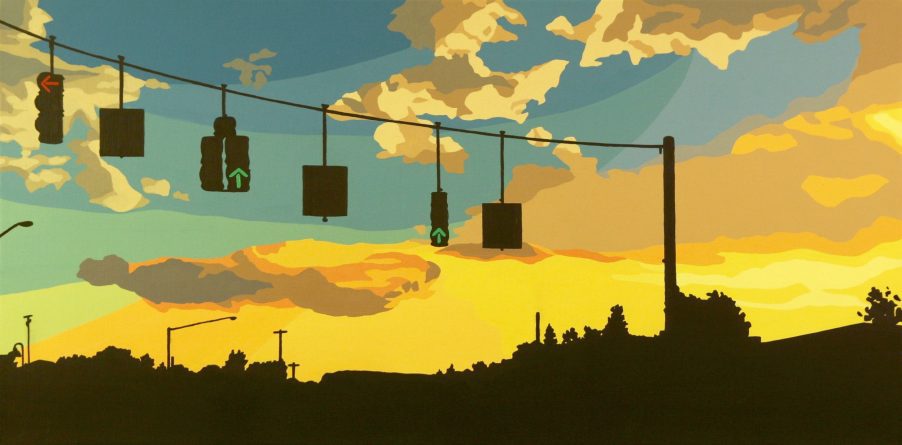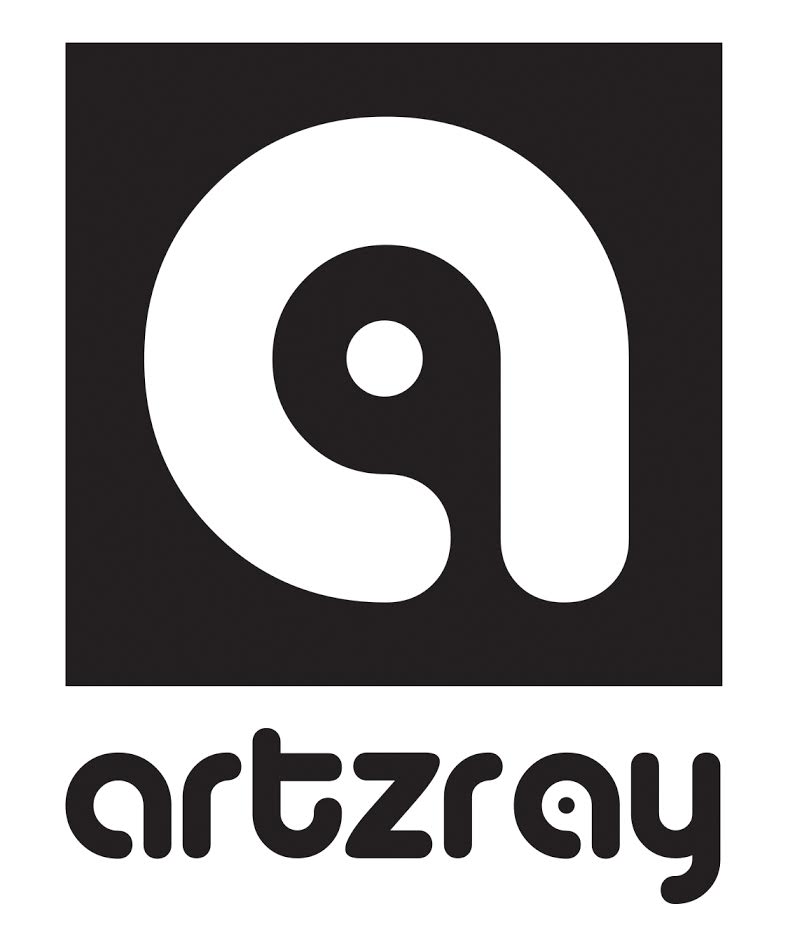The Private Life and Public Art of Lindsey Warren


Lindsey Warren is an American artist, born and raised in Los Angeles. She graduated from Boston University, earning a BFA in 2004 and MFA in 2008. Lindsey’s paintings have been exhibited throughout the United States with recent shows in New York City, Boston, MA and Los Angeles. Lindsey has been a studio artist in Chashama’s Workspace Program in NYC and a participant in the Bronx Museum’s AIM program. Her work examines the urban landscape using systematic processes, perception and memory to translate specific moments in time. Lindsey’s public works and murals have been installed in Boston and New York City.
You’re from LA, but lived in Boston a long time. What brought you back to the West Coast and what has the change been like for you?
Both Boston and NYC still feel like home as I spent most of my adult life in those two cities. I returned to the west coast for a few reasons including family, affordability and lifestyle (I also love the heat!). Most of my friends and art contacts are on the East Coast so that has been hard, but I have been traveling back and forth between NYC and LA quite a bit and I hope to continue finding opportunities that allow me to spend time there. I am still getting used to driving everywhere, but LA has been very welcoming so far and I am looking forward to making new friends, connecting with old ones, and finding additional opportunities to exhibit my work here.
What type of work do you do?
Oil painting is my primary medium. It has a great amount of flexibility in terms of color mixing, layering and modifying the work. I also make works on paper with graphite and gouache. The public works I create are extensions of these processes on a larger scale and with different media.
Tell us about your public art projects and your current work.
I started working on public art projects with volunteer organizations, first through the Boston University Community Service Center, then with New York Cares. I created designs for murals to be installed in public parks and schools and quickly realized how these large visible works can strongly impact the populations both viewing and creating them.
“I enjoy making public works that relate to my studio practice but have a potentially different audience and monumental scale.”
The mural I just completed at Bronx Terminal Market was a great experience because I was selected based on my previous studio work and I had complete control over the process. I was able to make my paintings at a much larger scale, depicting a place (the Bronx) that I have a connection to.
What are some of the pros and cons of doing public art?
Making public art is very different from working in my studio where I make all the decisions and everything is private until I choose to exhibit it. I wouldn’t necessarily divide them into pros and cons as I learn a lot from each project, but there are some distinct differences between studio art and public art. First, with public art there is the client and commission aspect, which involves levels of discussion and approval at each stage of the process. I enjoy these exchanges and the required problem-solving, but have learned that it is important to work with people/companies/organizations who choose me after reviewing my previous work. I now know not to accept any opportunity that is not suited to my aesthetic or has rigid imagery requirements.
“Public art projects also involve a lot of research and paperwork. Timelines, supply quantity estimates and budgets are usually left to the artist and often have to be completed at the proposal stage of the project.
And each one is different! I have learned a lot about masonry, adhesives, shipping, chemistry and physics that I never imagined were required skills for making paintings. I definitely credit my education from the Boston University College of Fine Arts for preparing me for projects like this, as the many different Painting, Design, Materials/Techniques and Sculpture/Woodworking classes I took gave me the skills and confidence to take on projects using any painting material or surface.
How did you get your start as an artist?
I never decided to be an artist, it happened organically. But I can’t imagine doing anything else! I grew up making art every day, had some great teachers throughout school, and was lucky to have a family who never questioned whether my passion was a practical career option. In high school I participated in Ryman Arts, a weekend program of classes that helped me build skills and confidence to pursue art as a college major and a career.
Who are some of your major artistic influencers?
Some of my all-time favorite artists include: Sol LeWitt, Joseph Albers, Yvonne Jacquette, Ed Roucha, Alex Katz and James Turrell. I love color and a certain degree of precision.
What advice would you give a young artist just starting their career?
My advice is to never stop making things, applying for things, and looking at art. You have to be stubborn to succeed! You are going to get rejected a thousand times throughout your life and you can’t let it get you down. I have become so immune to rejection that I sometimes forget whether I have heard back from an opportunity I applied for. It still hurts sometimes but persistence makes the acceptances that much better.
When is the first time you were satisfied with your art/performance?
Every time I finish something I see it as a jumping off point for the next piece. I think if I was ever completely satisfied I would get bored.
What do you think is the right path to a career in the arts? Do you endorse Art School or over a Liberal Arts Education? Or do you think you should skip any type of formal art education and just get out and practice your art form?
This is different for everyone and depends on your specific goals. Some student artists thrive in an academic environment and some find it restricting. I experienced this while teaching at several types of Art Schools and Universities, you have to find the right fit since college requires a huge amount of self-motivation. The best path for me was a formal arts education within a larger University. I wanted the intensity of an Art School within a liberal arts community and I found that at Boston University.
“Regardless of your educational path, the hard work really comes after school when you are on your own, figuring out how to create opportunities for yourself.”
As a working artist what type of job offer would it take for you to give up your art and take a regular non-artist job?
I really can’t think of one. The fact that I am able to paint almost every day, whether it’s for a commission, mural, or potential exhibition, makes the ups and downs worth it for me right now. I do miss teaching though!
What is your artistic super power?
I am really good at drawing straight lines without tape or rulers!
How do you incorporate technology into your artistic method and what technology do you purposely avoid or reject?
I work exclusively from digital photographs I take, and purposefully avoid using a professional camera for these reference images. Most photos I work from are taken with my phone and are intentionally printed small so I am forced to use memory and invention to modify and combine the images. When painting murals I use projectors to enlarge and trace images of drawings I have made previously, I never trace photographs. I am skilled with software such as Photoshop and do some graphic design work, but those skills mostly benefit my studio practice when I am updating my website or editing photos of my work.
Describe your studio practice or methodology for producing your artwork.
Whether I am designing a mural or painting, I always begin with photographs. Visiting the place I am painting is essential to my process. Next I make thumbnail-style sketches to help decide which composition(s) work best. Small gouache drawings help me work out color ideas, or if it’s an oil painting I often jump right to the canvas. For the Bronx mural I made small oil paintings of the final images then projected photos of them onto the large panels. In my studio I have to work on several paintings at once to allow for drying time, and so I don’t get too focused on one image.
Caffeine of choice? Coffee, Tea or Red Bull?
I am on a cold brew iced coffee kick right now, usually made at home!
Follow Lindsey Warren:
website: lindseywarren.com
instagram: @lindseywarren
facebook: https://www.facebook.com/lindseywarrenpainting/
twitter: @lindseywarren
youtube channel: https://www.youtube.com/channel/UCGgr3-jrtlvSyYWoEX0hU0A





